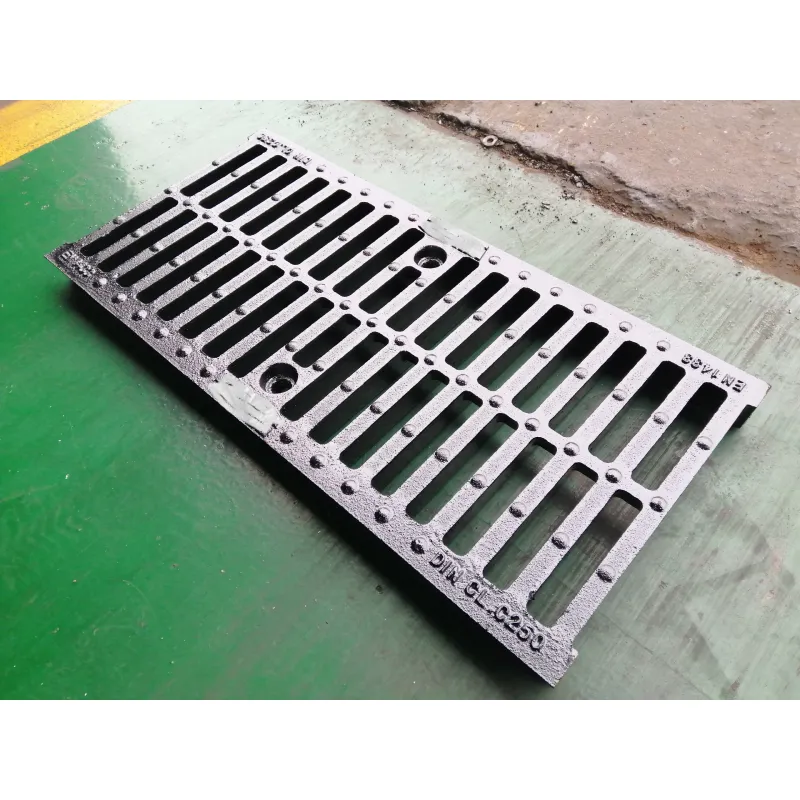Understanding the Importance of Gully Grating in Drainage Systems and Urban Infrastructure
The Importance of Gully Grating in Urban Infrastructure
In the realm of urban planning and infrastructure management, managing stormwater runoff effectively is a critical aspect of sustainability and environmental protection. One of the key components in this system is gully grating, a feature designed to facilitate the efficient drainage of water from roads and streets into the underground drainage system. This article delves into the significance, design, and maintenance of gully grating, as well as its role in mitigating urban flooding.
Understanding Gully Grating
A gully grate, often referred to simply as a gully, is a surface structure designed to collect and direct rainwater into storm drains. Typically made of cast iron or fiberglass, these grates come in various shapes and sizes, tailored to fit the specific needs of a particular area. Strategically placed on the road surface, gully grates serve a vital function they prevent water accumulation, enhance traffic safety, and protect infrastructure from water damage.
Design Considerations
When designing gully grating systems, several factors must be taken into account. The first is the volume of water expected during heavy rainfall. Urban areas are often impervious, meaning that rainwater cannot be absorbed into the ground as it would be in a natural landscape. This leads to increased surface runoff, necessitating gully grates that can handle significant water volumes efficiently.
Another essential consideration is the shape and size of the grate itself. These elements must be designed to accommodate debris flow, preventing blockages that can lead to flooding. Many modern gully grating systems are designed with slotted or perforated patterns to facilitate debris bypass while still directing water into the drainage system.
Environmental Impact
gully grating

Gully grating plays a pivotal role in environmental conservation. Effective drainage systems help to mitigate flooding, which can cause severe damage to property and ecosystems. Additionally, stormwater can be a carrier of pollutants such as oils, heavy metals, and chemicals. By directing this water into treatment systems rather than allowing it to flow unchecked into waterways, gully grates help preserve aquatic ecosystems and improve water quality.
Moreover, the strategic installation of gully grates can significantly reduce the risk of erosion. Erosion not only affects landscape aesthetics but also undermines the structural integrity of roads and other infrastructure. By managing the flow of water and minimizing excessive runoff, gully grates contribute to the longevity and safety of urban environments.
Maintenance of Gully Grating Systems
While gully grates are designed to be durable and effective, regular maintenance is crucial to their performance. Over time, debris, leaves, and sediment can accumulate and block the openings of the grates. This blockage can prevent water from draining effectively, leading to localized flooding and potentially hazardous conditions for pedestrians and motorists.
Routine inspections should be conducted to identify blockages and wear. Cleaning the grates often involves using specialized equipment to clear debris and silt, ensuring that water can flow freely. Urban planners and local governments must allocate resources to maintain these systems correctly, as neglect can lead to significant structural and safety issues over time.
Conclusion
In summary, gully grating is a crucial element of urban infrastructure, vital for effective stormwater management. Through thoughtful design and regular maintenance, gully grates help to mitigate flooding risks, protect the environment, and ensure the safety of urban areas. As cities continue to grow and face the challenges posed by climate change, investing in efficient drainage systems, including gully grating, is more important than ever. Not only do they facilitate immediate runoff management, but they also contribute to the long-term sustainability of urban environments, making our cities safer and more resilient for future generations.
-
The Smarter Choice for Pedestrian AreasNewsJun.30,2025
-
The Gold Standard in Round Drain CoversNewsJun.30,2025
-
The Gold Standard in Manhole Cover SystemsNewsJun.30,2025
-
Superior Drainage Solutions with Premium Gully GratesNewsJun.30,2025
-
Superior Drainage Solutions for Global InfrastructureNewsJun.30,2025
-
Square Manhole Solutions for Modern InfrastructureNewsJun.30,2025
-
Premium Manhole Covers for Modern InfrastructureNewsJun.30,2025
